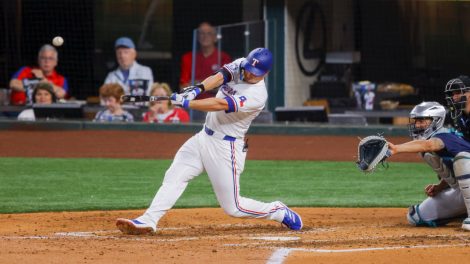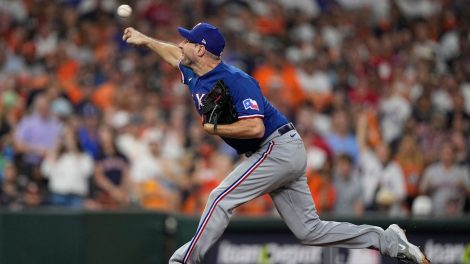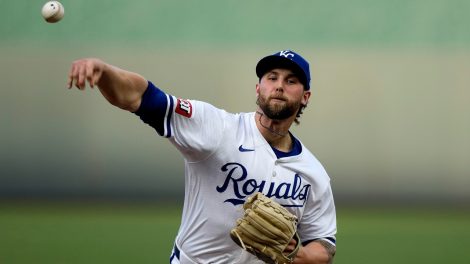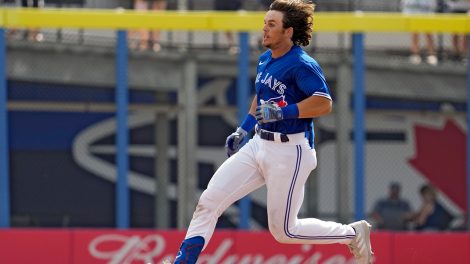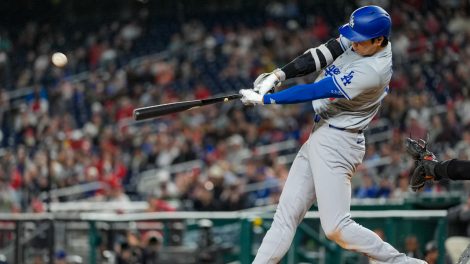As the Toronto Blue Jays’ brain trust has emerged in the wake of the broadly negative reactions to their activity around the trade deadline, a concerted effort seems to be afoot to begin to make their mindset and intents somewhat clearer.
In particular, Mark Shapiro’s listing off and delineating the “waves” of pitching talent in the system was revealing in a way that few public pronouncements from the team have been. Fans and observers now have some added insight as to who the organization believes will contribute at the big-league level, and to some extent, when they will do so.
The greater question is, inevitably, what those players will contribute. This is always difficult to project, as pitchers’ progressions are as unpredictable as any professional athletes, and injuries can substantially change their timelines and effectiveness.
When it comes to the first wave of pitchers mentioned by Shapiro, we already have some data and observations to draw up an initial judgment, and it would be a stretch to imagine any of them contributing more than as second-tier big leaguers or role players. Trent Thornton and Ryan Borucki may be fourth or fifth starters if they gain regain some measure of health and effectiveness. Sean Reid-Foley gives you just enough to pull you back in just as you’ve written him off. And Jacob Waguespack has emerged recently to be far more intriguing than we might have expected, but that new optimism for his upside is still not franchise-changing.
[snippet id=4545751]
The second wave obviously offers more promise, with Nate Pearson offering a tantalizing combination of velocity and pitching acumen to make one hope that there is a legitimate ace-calibre pitcher coming soon. Patrick Murphy also draws enticing notices, although, like the other names in that tier, there’s still enough distance between their current performance and their reasonable estimated arrival in the big leagues to leave a lot of questions.
The third wave is where things are sufficiently misty and soft-focused so as to allow a little more aspiration to creep into expectations. These hurlers remain two-to-four years away, perhaps emerging just at the point where several of the Jays’ key offensive contributors could be approaching their peak seasons. It makes this group that much easier to dream on.
There’s already been a lot written about Eric Pardinho, Simeon Woods Richardson, Adam Kloffenstein and Alek Manoah, either because of their draft position, signing prominence or their involvement in a high-profile trade. But there are a few more compelling names that were listed by Shapiro, as well as a couple of names that were not. The following is a brief summary of some third-wave pitchers to watch as the minor-league season concludes, and as we look to next year.
Zach Logue – 23 years old, left-handed starter, New Hampshire (AA).
2019 Stats: 4.48 ERA, 1.318 WHIP; 75 Ks, 32 BBs in 96.1 innings between AA and AAA.
A ninth-round pick out of the University of Kentucky in 2017, Logue feels like a curious addition to Shapiro’s list, though that may be taking a narrower, more recent view of his performance. He posted better numbers in 2018 (3.15 ERA at Lansing and Dunedin) and 2017 (1.47 ERA at Vancouver and Bluefield), though his strikeout rates have continued to decline with each level advancement. Logue is smallish (listed at 6-foot) but is described as athletic, and doesn’t have much margin for error with his pitches.
Maximo Castillo – 20 years old, right-handed starter, Dunedin (High-A).
2019 Stats: 2.85 ERA, 1.135 WHIP; 102 Ks, 26 BBs in 113.2 innings.
The young Venezuelan signee has flown under the radar somewhat since becoming a pro, but this season may mark his emergence into the system’s prospect rankings. Castillo is big, and the velocity on his fastball has ticked up gradually over the past few years. Lansing Lugnuts broadcaster Jesse Goldberg-Strassler mentions that in his season in the Midwest League, Castillo seemed to focus more on spinning breaking pitches, but this year in Dunedin, he is using his fastball more effectively. The Blue Jays have been deliberate in his development, giving him full seasons at each level for the past three seasons. He has carried a healthy innings load in two consecutive years, which augurs well for 2020, and an opportunity to see him start at AA.
Joey Murray – 22 years old, right-handed starter, New Hampshire (AA)
2019 Stats: 2.77 ERA, 1.126 WHIP; 141 Ks, 40 BBs in 113.2 innings at Lansing (A), Dunedin (High-A) and New Hampshire (AA)
Murray snuck into the Blue Jays’ top 30 prospect rankings at the mid-season mark, perhaps due to the fact that he leads all Jays minor leaguers in strikeouts. Murray’s stuff isn’t awe-inspiring, as his fastball works in 87-92-m.p.h. range. However, he hides the ball well from batters, and Goldberg-Strassler notes that above-average spin rate allows it to play up. Moreover, his changeup has improved this year, which offers him a key weapon if he is to develop as a Marco Estrada-type.
Josh Winckowski – 21 years old, right-handed starter, Dunedin (High-A)
2019 Stats: 2.52 ERA, 1.183 WHIP; 95Ks, 37 BBs in 107.1 innings between Lansing (A) and Dunedin (High-A)
Nick Allgeyer – 23 years old, left-handed starter, Dunedin (High-A)
2019 Stats: 4.19 ERA, 1.21 WHIP; 95 Ks, 26 BBs in 107.1 innings.
Respectively, they were the starting pitchers in the Midwest League and Florida State League all-star games this season, and yet neither merited a mention on Shapiro’s list. Perhaps it was an oversight. Winckowski has been particularly interesting to track this year, as the 2016 15th rounder has maintained his very good performance in Vancouver last year (2.78 ERA, 9.4 K/9) through the jump this year to high-A. Winckowski is well-regarded as a fierce competitor, with a 6-foot-4 frame, though his fastball sits in the mid-90s.
A 12th round pick out of Iowa in last year’s draft, Allgeyer acquitted himself well in Vancouver (2.73 ERA, 10.6 K/9), and started this season very well despite skipping levels to move straight to high-A. He’s run into trouble in the second half of the season, after entering the Florida State League all-star break with a 2.63 ERA. Allgeyer mixes four pitches, with a fastball in the low 90s.
[relatedlinks]



